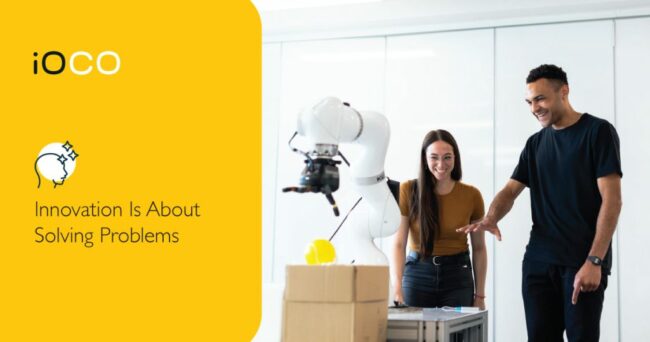The third decade of the new millennium is firmly underway, and everything is moving so quickly. We are told to improve, to perform, to innovate! In fact, the drive towards innovation has become an integral part of almost any corporate landscape. Unfortunately, very few companies take the time to unpack what innovation really is. They know that want it, they know that without it their chances of still being in business in five to ten years are slim, but if you ask ten people what it is you’ll get ten different answers.
So what is innovation?
I always start innovation workshops with this question, and I get answers ranging from “creativity” to “improved process” to “brand new products and designs to wow the market.” And none of these answers is inherently wrong, but each represents only a small part of what innovation encompasses.
Wikipedia states that innovation is commonly defined as the “carrying out of new combinations” that include “the introduction of new goods, … new methods of production, … the opening of new markets,… the conquest of new sources of supply … and the carrying out of a new organisation of any industry.” The scientific literature gives us more than 60 different definitions for innovation, and that’s before we get down to the different types of innovation. No wonder people are confused.
My definition of innovation is as follows: Innovation is doing the same old things better, for an economic benefit.
Now you might argue with me here. After all, some innovation is so disruptive as to be considered totally new and different. Or is it?
When you think of innovative companies – Tesla, Apple, & Uber are common examples I’m given – people are usually thinking of cutting-edge tech and innovation. But despite the massively disruptive leaps forward that these companies have given the world, they are still solving the same underlying problems. Transportation and energy. Communication. Commuting.
What does this mean for you? It’s important to re-frame how you think about innovation. And to do that you need to answer two questions. First, why do you want to innovate? Luckily this is an easy one as it only has two answers: either you want to make money, or you want to save money. Possibly both at the same time.
The second question: What problem are you solving? If you are looking to make money then what problem are you solving for your customers? If you are looking to save money then what problem do you need to solve internally? And if you are solving an internal problem, could it apply to your clients? If you don’t understand your problem then you can’t hope to get to a solution that really works for your business and your clients.
Experimentation is key, and failure is always an option
Once you know your problem it’s time to find a solution. Easier said than done, which is where experimentation comes into play. When innovating with products or processes, you have to be willing to be wrong. This is where the adage of “fail early, fail often” really comes into play. You have to be willing to try and fail and try again, keeping what works and throwing out the rest.
Unfortunately most people are measured on success, which is often to the detriment of the organisation.
So make sure that whoever is running your innovation initiatives has the mandate to fail. Fear of failure keeps us in our comfort zones, but when failure is encouraged as part of a learning and innovation journey, the end results are beyond your current imagination.
Risks and rewards
Starting an innovation journey is a risky prospect. After all, if failure is always an option then you do run the risk of investing without realising the benefits. But the bigger question you have to ask yourself is: Can you afford not to change? Can you afford to keep doing what you’re doing while the world changes around you?
I’ll be unpacking what an innovation journey looks like in my next article, but if innovation is on your agenda then it’s time to start thinking about your problems, and those of your clients.
By Alex Pryor
iOCO Head of Digital Innovation
